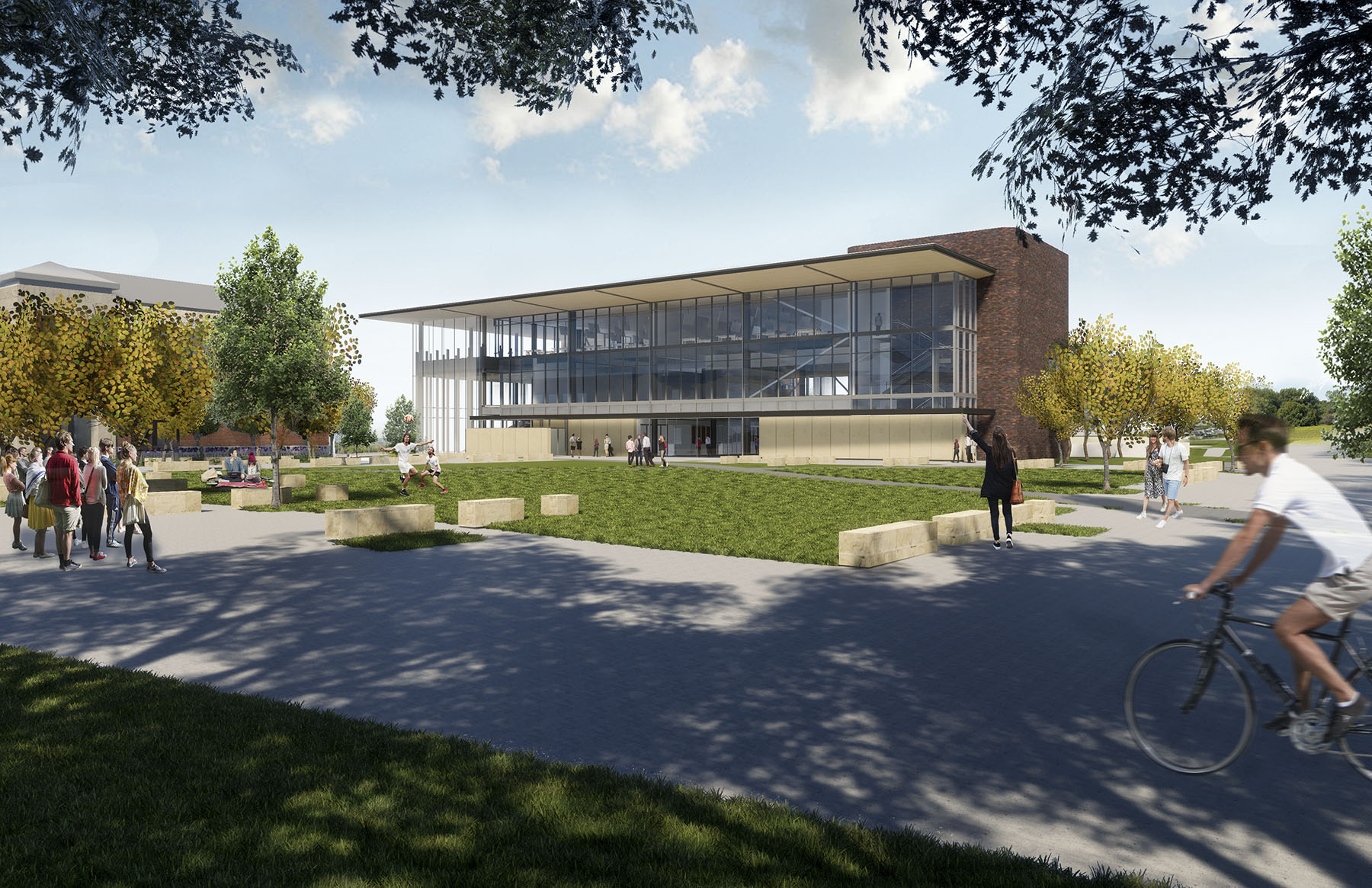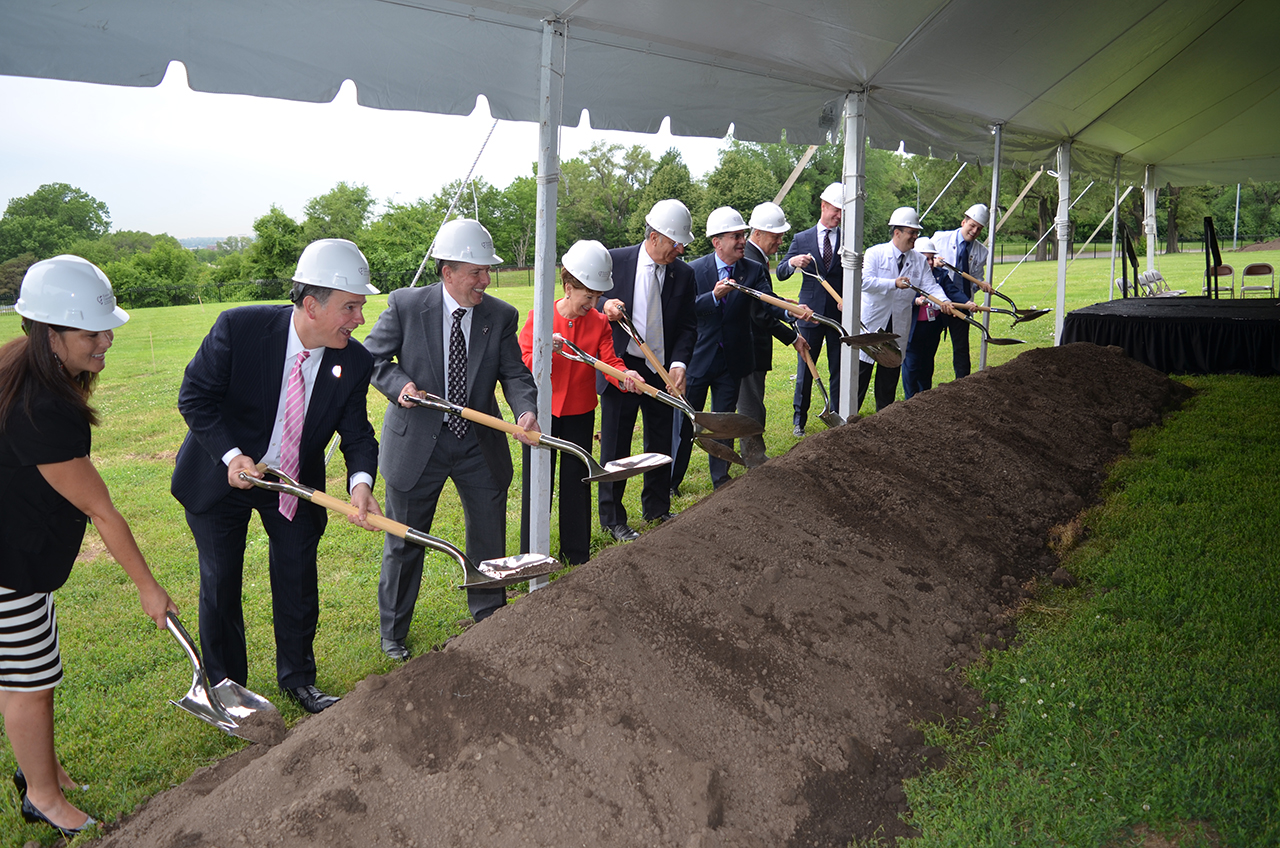Paul Thompson
Northeast News
On the morning of Monday, June 4, Kansas City University officially broke ground on a $33 million facility designed to make the school’s Historic Northeast campus a hotbed of innovation for years to come.
In a press release sent out last week, KCUMB indicated that JE Dunn will serve as the general contractor for construction, while the design of the facility was led by the team of Helix Architecture and Design and CO Architects. The Center for Medical Education Innovation (CMEI) isn’t expected to open until 2020, but KCUMB administrators – along with a standing room only crowd at the June 4 groundbreaking ceremony – are already allowing themselves to dream about the future.

The forward-thinking design of the four-level, 56,000 square-foot facility will boast features like flexible walls, virtual reality, and haptic technology – which utilizes tactile feedback to mimic lifelike sensory reactions. KCUMB administrators expect the features to help future-proof the curriculum.
“This is an exciting time in both medical and health care education; we’re on the cusp of incorporating a lot of technologies into the teaching platforms for medical students,” said Dr. Marc Hahn, President and CEO of KCUMB. “This gives us an opportunity to lead the charge in educating the next generation of physicians and scientists. When this building is completed, it will be one of the state-of-the-art facilities not just in the city, but also in the country.”
Other features include standardized patient rooms (where trained actors play the role of patients), high-fidelity simulation rooms (where medical robots display a variety of disease processes), and a simulation command center. The features will bolster the 13,000 square feet of classroom space.
“Our students will have the opportunity to practice over and over in virtual scenarios until they are confident and prepared when it comes time to treat actual patients, thus reducing medical errors and improving health outcomes for the communities we serve,” Hahn said.

The facility will also feature cutting edge Anatomage tables, which Hahn described as essentially six-foot iPad screens that are programmed specifically as a virtual dissection tool. The tables will be capable of calling in imaging studies, displaying CAT scans, rotating in multiple directions, and leading medical students in virtual dissections designed to eventually eliminate the need for plastic cut suits. Hahn said that those plastic models are realistic and helpful for simulating emergency operations, but he also called the cut suits expensive and difficult to re-use.
The Anatomage table, Hahn added, can change the game for beginning medical students.
“A first or second year medical student can now have a way to do a dissection without messing up a cadaver,” Hahn said. “The use of technology can accelerate the learning process.”
Darrin D’Agostino, Executive Dean, College of Osteopathic Medicine and Vice President for Health Affairs, noted during his remarks that the new facility will provide the tools to make the university’s faculty even more effective.
“One of the things that I can’t wait to get to are some of these really neat technologies,” said D’Agostino. “But they’re only tools. They’re tools that are going to allow our faculty – and ours do a great job – to do it better.”
Kansas City, Missouri Mayor Sly James embraced the futuristic ambitions of the new facility, relaying an anecdote expressed by a futurist during the annual South by Southwest festival in Austin, Texas.
“He said something that’s kind of stuck with me,” James said. “He said, ‘If you are thinking about the future, and your idea does not seem absurd, then you’re really not thinking about the future; you’re thinking about the past.’ So as you innovate, I hope that you have a ton of absurd ideas.”
Hahn’s ultimate vision for KCUMB students extends even beyond the new $33 million facility. He envisions a future where virtual reality can make any room a laboratory.
“Whether you’re in a classroom or in a laboratory, or sitting at the kitchen table of your apartment, you can go through a simulated operation,” Hahn said.
The construction Center for Medical Education Innovation will run in conjunction with the construction of a new intersection at The Paseo and Independence Avenue, a key project within the Paseo Gateway initiative. Hahn is looking forward to the role that the CMEI facility will play as an anchor of that intersection.
“It will also help us to redefine our campus as an important part of the Paseo Gateway. This will be a striking building,” Hahn said. “I also think it’s an exciting time for the Northeast neighborhood. I think there’s a great rebirth that’s happening for the community, and I think all will benefit.”
The CMEI facility was made possible thanks to $1 million grants from the J.E. and L.E. Mabee Foundation, the William T. Kemper Foundation, and lead gifts Sunderland Foundation, J. E. Dunn Construction Company, Victor E. Speas Foundation, Bank of America, N.A., Trustee, and Jack and Glenna Wylie Foundation.




















